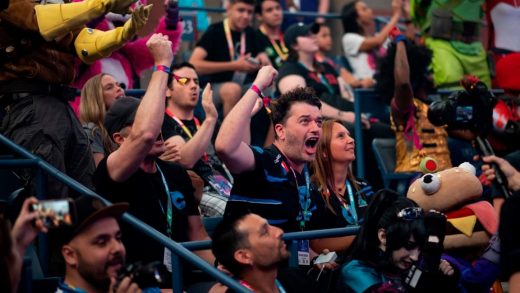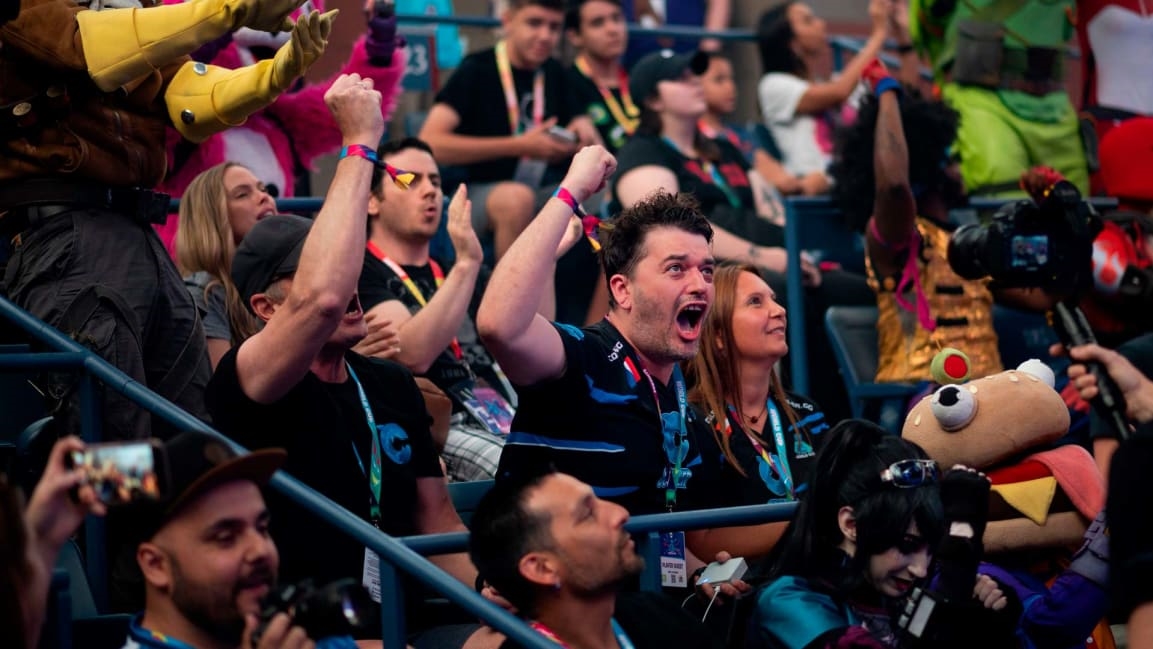Three ways brands can win at next year’s Fortnite World Cup
The Fortnite World Cup not only drew a sold-out crowd to Arthur Ashe Stadium in New York last weekend, it attracted 2 million people to live-stream the event to see who would win the $30 million in prize money. The 16-year-old winner Kyle Giersdorf took home $3 million—that’s more than the winners of the 2019 Tour de France and 2019 Masters combined.
While many consider esports a distraction for kids playing video games, the industry shows no signs of slowing down. The Global Games Market Report forecasts that 2.5 billion players across the globe will spend a whopping $152.1 billion on games, up 9.6% from last year. Fortnite has been the latest phenomenon to dominate the esports industry, boasting over 250 million registered users, with active players reaching well over 70 million in some months. On Twitch, viewers streamed a staggering 87 million hours of Fortnite in July alone.
With numbers like this, it’s no wonder why brands are asking, “How can I get in on the action?”
I want to relive the world cup all over again… what an experience and incredible event @FortniteGame put on.
— Ninja (@Ninja) July 29, 2019
Throughout Fortnite Finals Weekend, YouTube enticed gamers to link their account with their Epic Games account and watch at least 20 minutes of the Fortnite World Cup to earn “Drops,” exclusive in-game features that allow for more player customization.
However, other brand engagements at the event were limited. Fans honed their accuracy at the Nerf gun range. YouTube Gaming sponsored the creators lounge, outfitted with retro arcade games. A couple of buildings at the nearby subway station were adorned with Gatorade G Fuel signage. That was it.
This was definitely version 1.0 of brand engagement at the Fortnite World Cup.
Despite a buildup and excitement similar to the MLB All-Star Game or even the Super Bowl, many brands are still trying to figure out how to get into esports. Actively selling to this audience is a quick way to lose credibility, and establishing an authentic connection is tricky.
For marketers, it’s time to toss out traditional models and start thinking creatively. Fortnite is a platform that will reward brands for being authentic and clever. Wendy’s achieved this last November (with some help from my agency VMLY&R) when it jumped into this new form of social by setting up a free stream on the site and participating in the game’s Food Fight mission. The effort saw the brand take home the Social & Influencer Grand Prix at this year’s Cannes Lions International Festival of Creativity.
How does brand engagement evolve next year? Knowing Fortnite is supported on all major gaming platforms, it’s not a stretch to envision themed areas for Xbox, PlayStation, and PC. Wireless carriers have an opportunity to showcase the gaming benefits of increased speed and decreased latency that come with 5G. Non-gaming brands have an opportunity to educate gamers on how to increase their performance. The list of potential brand possibilities could go on and on.
When considering an esports campaign, marketers should consider three strategies:
1. Remember you have two audiences: fans at the event and fans streaming at home
Those at the event likely have a desire to engage in a fun activity and share it on social media. Give them that fun activity and the content ready to share. Viewers at home are most likely streaming to a device that has their thumbs on it. Provide a simple point of interaction that sends an item to their digital wallet.
2. Create content native to the platform
Dropping your logo into an esports event isn’t going to cut it. Showcasing your latest gaming peripheral in a booth is too sales focused. If you’re a gaming headset manufacturer, stand up a gamified experience where fans listen to identify an in-game threat or control the direction of vehicles moving in the game. Fans will know you have great gear, so just show them the benefits in an entertaining way.
3. Collaborate with influencers
Gaming influencers have built huge interactive and engaging teenage communities. Tyler Blevins, aka “Ninja,” boasts 14 million followers on Twitch (and will soon be asking them to follow him to Microsoft’s Mixer platform), and partnerships with such brands as Red Bull and Uber Eats. His collaboration with Uber Eats was so successful the campaign managed to secure maximum discount redemption codes in just one day.
The 2019 Fortnite World Cup marked the first of what will surely be an annual event. With a sold-out stadium for three days, millions of live streams, ongoing media coverage, and the unprecedented prize money, Epic Games should consider the event a success.
Brands wanting to embrace the esports community now have a year to figure out their strategy for the 2020 Fortnite World Cup. Those with the most genuine and unintrusive ideas will win.
We can also look forward to an ongoing battle for streaming viewership between YouTube and Twitch. YouTube has demonstrated that it’s willing to battle for viewership, but Twitch has the influencers and an exciting extensions platform.
Fortnite has raised the bar for esports competition. It’s time for brands and marketers to take it to the next level.
Jeff Danley is the director of innovation and partnerships at VMLY&R.
Fast Company , Read Full Story
(41)



